Geologic tick
How a prehistoric landslide in San Juans can help communities deal with climate change

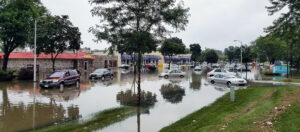
The following was provided to Vanessa A. Countryman, Secretary of the United States Securities and Exchange Commission, on June 17, 2022.
Thank you for this opportunity to comment on the rulemaking on climate risk disclosures for issuers of public securities.
The Woodwell Climate Research Center is a scientific research organization that works with a worldwide network of partners to understand and combat climate change. We bring together hands-on research experience, and 37 years of policy impact to find societal-scale solutions that can be put into immediate action by policymakers and decision makers. Scientists from Woodwell work in more than 20 countries on six continents, collaborating with a wide range of partners, including national, subnational and local governments, nonprofit organizations, universities, and private sector companies in the investment, financial, banking, and agricultural sectors. Woodwell’s Risk Program models climate change hazards and related socioeconomic impacts to help develop a more resilient economy and society.
Woodwell commends the SEC for addressing the full scope of climate risk–including transition risks as well as Scopes 1, 2, and 3 emissions. Woodwell’s research in this area, however, is primarily on physical climate risk and our comments will focus specifically on that.
We believe that this draft rule represents a strong step in the right direction, toward greater investor awareness of material risks posed by climate change driven hazards. There are several areas in which we believe the proposal could be strengthened further.
A standardized approach for physical climate risk assessments
Woodwell supports the proposal to require registrants to include climate-related disclosures under Regulations S-K and S-X, and to require the disclosure of physical climate risks, including “harm to businesses and their assets arising from acute climate-related disasters such as wildfires, hurricanes, tornadoes, floods, and heatwaves.”
The SEC notes that “various software tools and … climate consulting firms are available to assist registrants” in assessing their physical climate risk. The proposal lacks, however, standardized guidelines for these assessments (e.g. require certain methodologies to be followed such as scenarios, types of flooding, or which return periods to use). Without this structure, some of the above-mentioned climate-consulting firms will provide results that registrants want to hear, instead of results that investors need to make informed decisions. Indeed, in the current marketplace some climate-consulting firms have overpromised potential clients detailed results that are beyond what climate models can realistically provide.
Define flood hazard areas, but not with FEMA maps
To provide robust insight into the risk of climate change driven flooding, the SEC should require registrants to define a flood hazard area. Without guidance on this question, there is a possibility that a registrant uses a standard that underestimates climate change-driven flood risk.
The SEC should not, however, rely on FEMA defined flood maps. FEMA does not include future climate risk so it does not make sense to use a FEMA standard that does not match the definition of climate-related risk.
FEMA maps do not even fully capture the present flood risk. 75 percent of FEMA’s Flood Insurance Rate Maps are more than 5 years old, and 11 percent have not been updated since the 1970s or 1980s. This means that many current flood maps are based on a past climatology, not even the present one. FEMA also does not model stormwater systems which is a huge omission of risk in urban spaces.
Additionally, flooding often occurs outside of flood hazard boundaries set by FEMA. During Hurricane Harvey, which hit Houston in 2017, 75 percent of damaged residential buildings were outside of the 100-year FEMA flood extent and 50 percent of damaged residential buildings were outside the 500-year FEMA flood extent. During Hurricane Sandy in 2012 which hit New York City, 50 percent of the buildings damaged were not in FEMA flood zones.
Disclosure of the maps and software tools that were used is also important. Each tool has its own benefits and drawbacks and anybody relying upon the registrant’s assessment of climate risk should be able to take into account the tools that were used.
Require Address-Level Location Data
The SEC asks whether registrants should provide location data at the zip code level. We believe that for effective physical climate risk assessment, address data should be provided for locations with a material climate risk. This is especially true for climate change driven flood risk, where two addresses on the same street might have different risk exposure. In that situation, zip code level data would be effectively useless.
Proposed Time Horizons
In the interest of standardization and cross-comparability of risk assessments, time horizons must be consistent for all registrants. The topology of “short,” “medium,” and “long term,” with time horizons of 1 year, 10 years, and 30 years respectively, is apposite. These horizons are well-aligned with scientific best practices: seasonal to long-term weather forecasts are already routinely performed by state and federal agencies and match the one-year horizon, the continued emergence of decadal scale climate model simulations as a robust predictive tool matches the ten-year horizon, and the baseline definition of what constitutes climate (time-averaged weather over 30 years) matches the 30-year horizon. Unambiguous definitions are foundational here. A scenario where registrants from the same economic sector use varying time horizons for “short term” would preclude an honest comparison and degrade investors’ ability to assess risk. This must be avoided.
In addition to risk horizons based on future time periods the SEC should require risk assessments relative to warming levels. Climate policy is fundamentally linked to warming outcomes, the Paris Accord value of 2°C is an example. Today we are already in a 1°C world with a 50 percent chance of breaching 1.5°C over the next 5 years. The differences in climate risk profiles between these warming levels, and relative to even higher warming levels that are highly plausible outcomes by mid-century, are significant. Quantifying these temperature-indexed risk profiles will provide both registrants and investors with a robust knowledge base for investment decisions. As scientific best practice routinely uses warming levels in physical risk assessment, we recommend the SEC, in addition to applying a uniform set of “short,” “medium,” and “long term” time horizons, mandate risk assessments for the current warming level and the two next higher levels. As of today, this means using warming levels of 1°C, 1,5°C, and 2°C.
We deeply appreciate the SEC’s leadership in pushing the issue of climate risk disclosure forward.
Climate change likely to slow plant growth in northern hemisphere
While the higher temperatures and CO2 levels associated with climate change currently fuel plant productivity, a study finds that changing conditions could take a toll on photosynthesis rates in regions outside the Arctic within a decade.
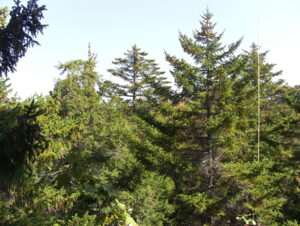
Plants are a highly effective carbon sink. Globally, forests absorb about 7.6 billion metric tons of carbon dioxide per year, about 1.5 times the annual emissions of the United States.
Since the 1980s, climate warming, prompted by rising levels of carbon dioxide and other greenhouse gasses in the atmosphere, has caused an increase in plant productivity in the Northern Hemisphere outside the tropics.
But new research published May 30 in Nature Climate Change estimates that summer warming in this region will begin to have the opposite effect within the next half-century, causing photosynthesis—or plant productivity—to decline. The global land carbon sink will likely take a hit as a result, the authors write.
Continue reading on The Scientist.
Climate risk assessment: New Orleans, Louisiana
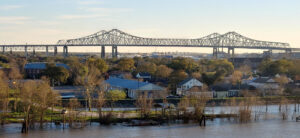
The impacts of climate change on the frequency and severity of physical hazards will put many communities
at risk. As the threat of climate change grows, so too does the need for accessible information, tools, and expertise to support climate-resilient decision making for municipalities. In the newly released report Recognizing Risk—Raising Climate Ambition, Woodwell Climate Research Center (“Woodwell”) highlights the need to localize and customize climate risk assessments. However, given that the private sector is meeting the majority of the need for climate data and analyses, communities without sufficient financial resources often do not have access to this information. To address this gap, Woodwell works with communities across the world, including New Orleans, LA, to provide municipal climate assessments, free of charge.
Results Summary
As a result of climate change, temperatures are set to increase in New Orleans. Extreme rainfall events will also become more frequent and sea levels will continue to rise, increasing future flood risk. The impacts associated with this increasing heat and precipitation will be felt differently across the city. Factors such as income, race, age, and availability of nearby greenspaces impact one’s capacity for resiliency during extreme heat and flooding events. Here we present findings on expected changes in maximum temperature, heat danger days, and extreme precipitation events paired with citywide income, race, and tree canopy data to help New Orleans create a more resilient future.
Government negotiates with Musk to monitor the Amazon (Governo negocia com Musk monitoramento da Amazônia)
Bolsonaro announces contract with Musk to monitor the region and says satellites will debunk “lies” about devastation (Bolsonaro anuncia contrato com Musk para monitoramento da região e diz que satélites derrubarão “mentiras” sobre devastação)
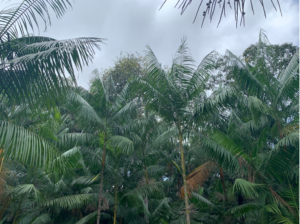
President Jair Bolsonaro (PL) and billionaire Elon Musk—owner of the companies SpaceX, Tesla and Starlink—announced yesterday in São Paulo the launch of a satellite internet program that aims to connect 19,000 schools in rural areas and promote “more technological” environmental monitoring in the Amazon. However, details of the agreement were not disclosed.
O presidente Jair Bolsonaro (PL) e o bilionário Elon Musk—dono das empresas SpaceX, Tesla e Starlink — anunciaram, ontem, em São Paulo, o lançamento de um programa de internet via satélite que pretende conectar 19 mil escolas em áreas rurais e promover um monitoramento ambiental “mais tecnológico” na Amazônia. Não foram divulgados, porém, detalhes do acordo.
Read more on Correio Braziliense.
New global study identifies opportunities for increasing carbon storage on land to mitigate climate change
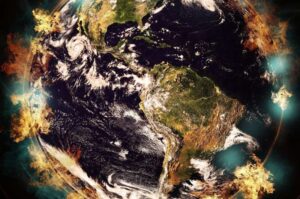
A new study, “The Global Potential for Increased Storage of Carbon on Land,” published today in Proceedings of the National Academy of Sciences (PNAS), provides a series of geospatial maps that improve our understanding of the global gap between current and potential carbon storage on land, and offers a framework for action to realize the full potential of land-based carbon storage as a natural climate solution. The study is timely, coming on the heels of the Intergovernmental Panel on Climate Change (IPCC)’s Working Group III’s latest report, which focuses on the urgent need to reduce carbon emissions in order to limit future warming, and highlights the significant mitigation potential of natural and managed ecosystems given the opportunity they offer to remove additional carbon from the atmosphere.



